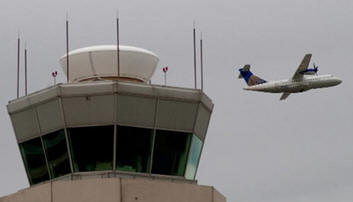|
|||||||||||
|
|
|
|||
|
By Bill Goldston |
||||
 |
September 23, 2010- The Federal Aviation Administration (FAA) announced on Wednesday a safety program that for the first time will integrate voluntary safety information self-reported by pilots and air traffic controllers.
This data-sharing
program will give the FAA a more complete picture of the national
airspace system by collecting, assessing and reviewing safety events
from the perspective of both pilots and air traffic controllers. United Airlines and its pilots have the first agreement in place to participate in a demonstration program. The FAA expects to sign similar agreements with other carriers in the future. |
|||
|
|
||||
|
"Safety is our
number-one priority," said U.S. Transportation Secretary Ray LaHood.
Having pilots and controllers provide information abut potential air
safety problems will help us correct them before they become accidents."
For the first
time, information from the Aviation Safety Action Program (ASAP) and the
Air Traffic Safety Action Program (ATSAP) will be merged, so input from
both pilots and controllers can help guide safety decisions. The program
will develop processes and policies to share and analyze relevant safety
information in a non-punitive way, consistent with the basic principles
of Safety Management Systems. These systems are widely used within the
FAA and the aviation industry.
ASAP encourages
aviation employees to voluntarily report safety information that may
help identify potential precursors to accidents. The ASAP process
resolves safety issues through corrective action rather than through
punishment or discipline.
Each program is
based on a safety partnership that includes the FAA and the aviation
operator, and usually includes a third party, such as the reporting
employee's labor organization. In today's agreement, the airline's labor
organization is the United chapter of the Air Line Pilots Association
(ALPA). Today, 73 air carriers have 169 ASAP programs for pilots,
mechanics, flight attendants, and dispatchers. |
||||


